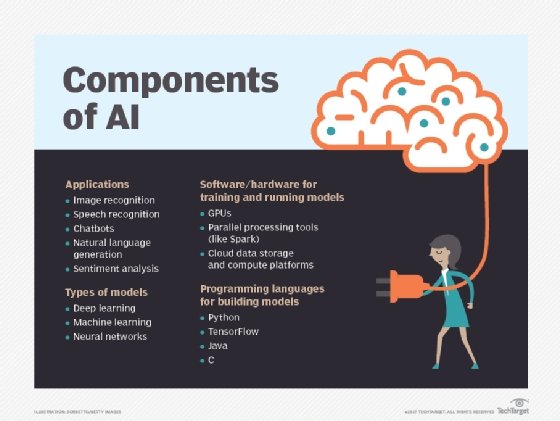Enterprises need to develop an AI strategy now
Business leaders who approach AI as a future concern are likely to miss the boat on this influential technology. The time to explore AI implementation is now.
There are many adjectives that could describe AI today, but in my opinion as a technologist and entrepreneur immersed in the world of AI, the best word to describe it is now.
AI is first and foremost a thing of the present, not the future. It's here now. At this point, developing an AI strategy to harness the current potential of the technology should be a top priority for most enterprises.
While some of what can be achieved with AI remains to be seen, some companies are already achieving transformative outcomes. To compete globally, innovating and leveraging AI to its fullest potential must be part of a central strategy for nearly every business in every industry across the world.
The implications of the set of technologies that constitute AI today -- technologies that can learn and self-improve -- are far-reaching and cannot be ignored. AI is not a single technology but a broad and deep set of technologies, tools and methods.
The key AI technologies we're seeing this year are computer vision, natural language processing (NLP), speech recognition and machine learning. These technologies are already making an impact in real-life situations across all industry sectors, driving innovation in energy and water efficiency, healthcare, traffic management, and more.
Useful uses for AI tools
At EY, teams are seeing certain use cases where AI can be especially impactful. One example is using computer vision to enable drones to improve inventory management. State-of-the-art audit drones follow auditors at a client's side and learn the environment, analysing inventory quantities in real time by reading labels, taking pictures, scanning objects and feeding this information directly into the audit platform.
EY teams are also using computer vision to fix poorly scanned business documents, which is critical to ensure audit contracts are read and interpreted properly. With deep learning technology, the AI system is trained to correct fading and blurring in documents by focusing on those areas and then reconstructing them to create a clear document. This can make a previously illegible document readable, saving time and delivering a measurable impact for a business.

NLP is another technology use case that is proving AI's effectiveness, particularly for reading and interpreting a large number of contracts. This is time-consuming, inefficient and mundane when executed by humans. But an NLP tool used at EY called Document Intelligence for Contract Review automates the review process, which reduces human error and allows audit teams to focus on higher value activities.
Another application of AI strategy is the time-consuming and complex task of sifting through documents and databases to identify potential capital allowances. Available tax relief is often overlooked, but with smart technology and machine learning capabilities, teams can use an automated review tool to find significant savings both in time and cash tax.
AI with a purpose
Businesses, governments and academic institutions should approach their AI strategy with purpose and intent in 2019. Gone is the time of unguided learning for AI. The research and applications we carry out today will determine tomorrow's potential.
A strategic approach to AI that is led by specific and thoughtful assessments of use cases where AI can be effective can prove to be successful. Adopting AI requires patience and a willingness to learn, so organizations need to begin immediately, even if only through small pilot applications at first. One key to success is having an AI plan that offers structure, control and oversight.
To be innovation leaders in the future, businesses, governments and academia alike must prioritize the field of AI today. Now is the time for productive policies and meaningful collaboration that can help break down barriers to adoption and accelerate the transfer of AI technology from laboratories to real-life use.
Meaningful collaboration means bringing together people from diverse backgrounds and interdisciplinary fields to spark conversation about how AI can be a solution and how we can create policies and standards to develop and use AI safely and responsibly. Starting now, even if only with small-scale projects, can have an impact. Businesses can begin to create standards and frameworks for using AI in prescribed scenarios and scale gradually over time.
Most importantly, those collaborating to accelerate the development of an AI strategy must remember that every challenge in the world, and particularly in business, is an opportunity for AI.
The views expressed in this column are those of the author's and do not necessarily reflect the views of the global EY organization or its member firms.







